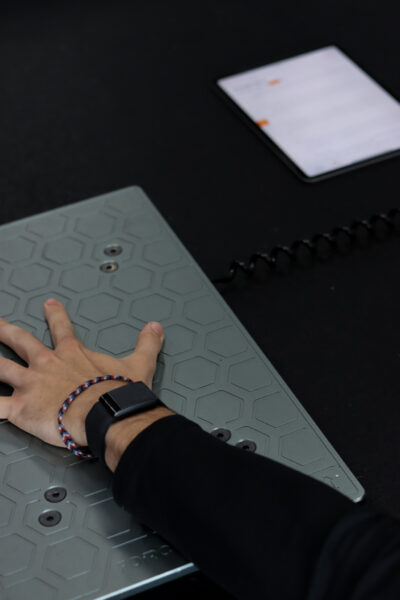The following is an adaptation from a presentation from our DPT Clinical Student, Yessy Fischer. She adapted this material from her use of force plates within Petroski Physio and the Pacey Performance Podcast.
If you’re a serious athlete between 16 and 30, and dealing with an injury you’re probably already tracking some metrics—whether it’s sprint times, vertical jump, or workload. But the future of sports science is moving way beyond that. It’s heading toward a world where force plates and in-game tracking systems don’t just measure what you’re doing, but help predict when you can return.
From Data to Development: Why This Matters for Young Athletes
There’s a growing interest in using lab-based assessments—like force plate testing—and integrating them with what actually happens in games. And while the research is still catching up, this could eventually help coaches and sports scientists identify elite athletic potential earlier, especially in youth athletes.
Let’s say you’re a 17-year-old hooper dealing with knee pain but you have a baseline of a 35-inch vert. That raw number is great, but what matters even more is how you generate force, absorb it, and express it under fatigue or game stress. This information can help to guide you during the return to sport process. Force plates break this down in detail—showing how efficient your movement is, not just how high you jump.
Not All Metrics Are Created Equal
There’s been a bit of a “force plate boom” lately, especially in performance circles. But one important message that came out of this talk is that metrics are only as valuable as their context. A vertical jump might be key for basketball, but in sports like baseball or soccer, force-time curves and eccentric force production often tell us way more about how an athlete moves, decelerates, or prepares for high-velocity actions.
At Petroski Physio, we’ve always believed in individualized programming—and this is exactly why. No two athletes move the same, and your sport, position, and injury history all influence what metrics matter most.
The Real Gap: Turning Data Into Decisions
Here’s the truth: data is everywhere—but insight is rare. Even with the NBA and MLB using in-game tracking systems, the missing link is knowing what to do with the numbers. How does that data actually help you move better, play harder, or stay healthy?
That’s where we come in. At Petroski Physio, we bridge that lab-to-field gap. We use force plates to analyze your movement strategies—especially during key actions like jumping, landing, and decelerating—then turn those insights into targeted programming that improves performance and reduces injury risk.
One example discussed was how countermovement jump data is tied to real in-game actions like shot blocking and rebounding. In pressure situations, athletes who produce force more efficiently are the ones who rise—literally.
Looking Ahead: What You Should Know
- Force plates and data are necessary tools, not solutions—they need smart interpretation.
- The best use of data isn’t collecting it—it’s applying it.
That’s what we aim for every day at Petroski Physio. You’re not just a number—we’re here to help you move better, compete harder, and become the best version of the athlete you’re meant to be.
Nick Petroski DPT

